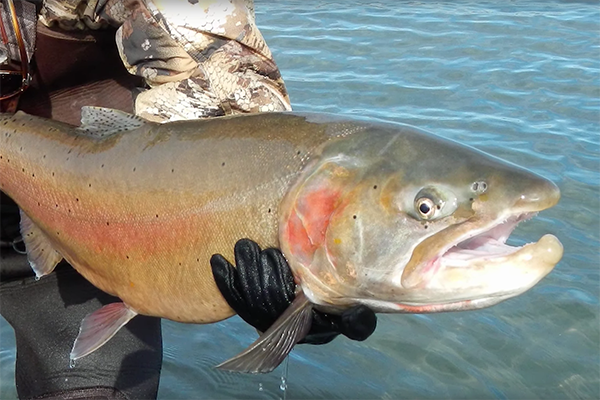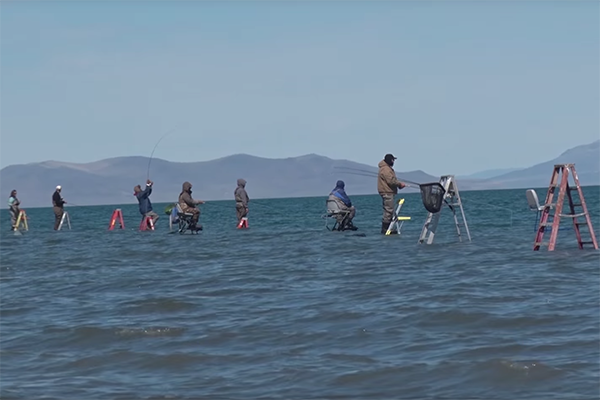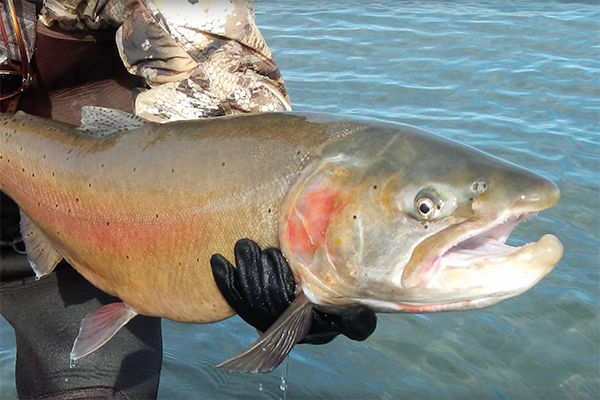
In the last ten years, scientific evidence produced using state of the art genetic analysis showed that trout species previously considered to be extinct worldwide had actually survived with tiny remnant populations, and had even gained a toehold in reestablishing themselves. This came as a surprise to some fisheries managers and environmentalists working in the field, who were then quick to respond with conservation measures. The New York Times even reported on one of the happy developments in Nevada.
North America’s Lahontan Cutthroat (Oncorhynchus clarkii henshawi) was the largest specie of trout in North America — with specimens on record weighing 41 pounds — but were declared extinct in the 1940’s in their native range. In Nevada’s Pyramid Lake, where there is anecdotal evidence of even larger historical specimens, Lahontans have been making a strong showing at making a comeback, with support from tribal and federal fisheries programs working with original gene stocks identified from isolated streams within the region’s drainage.

Pyramid Lake exhibits some unique characteristics that affect it’s biology, owing to it’s being a remnant of a large ancient body of water, Lake Lahontan, which encompassed a much larger area 7,000 years ago after the most recent Ice Age. Climatic conditions post Pleistocene changed and the lake dried up, leaving the remnant bodies of water now known as Pyramid Lake, Walker Lake. the outflow of Lake Tahoe is the Truckee River and feeds Pyramid to a nominal degree, but not to historical levels due to agricultural dewatering and other use. As Pyramid Lake’s catchment is comprised to a significant extent of evaporative water from Lake Lahontan, it exhibits a…





